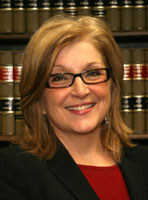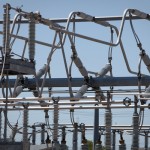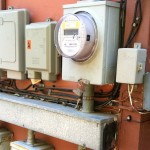Secret Price of Power Hides What Texans Really Pay
The electricity industry and its regulators in Texas have consistently touted the state’s competitive retail market as good for consumers. But price data indicate many of those customers are failing to take advantage of the lowest rates.

Courtesy Texas PUC
Donna Nelson chairs the PUC
In speeches and at public hearings, Donna Nelson, chairman of the Public Utility Commission (PUC), has contended that the areas of Texas where electricity is sold by a variety of retailers — as opposed to just one utility company as in San Antonio and Austin — is a system that benefits consumers.
“I think what the rates now show us … is that competitive markets work,” Nelson said at a commission meeting earlier this year.
Similarly, in 2011, Nelson told the Gulf Coast Power Association, an industry group, that while critics may “look for any way to describe Texas’s restructured market as a failure,” Texas retail electric providers had rates well below the national average according to an example she cited.
“Customers in Dallas-Fort Worth could choose from several different 12-month fixed-price offers at 8.4 cents per kilowatt hour,” Nelson told the group. According to federal data, the average price nationwide in 2011 was nearly 12 cents per kilowatt hour.
But how many customers in Dallas, Houston and other “competitive markets” were actually paying those low rates like the 8.4 cents per kilowatt hour Nelson mentioned?
Secret Data
If you asked the electric retailers, there would be a problem. You’d be told such data is kept secret.
“The price of electricity is proprietary,” said John Fainter, president of the Association of Electric Companies of Texas, an industry group representing big power companies including Dallas’s TXU Energy and Houston’s Reliant Energy.

Dave Fehling/StateImpact
Texas electric retailers keep price data secret
The price actually charged to customers is considered a “trade secret”.
“I’m not aware of being able to gather that information. That would actually be between the retail electric provider and the customer and their contract,” said Sheri Givens, a lawyer who heads the Texas Office of Public Utility Counsel, a state advocate for consumers.
But there is one place to get an idea what Texas consumers are actually paying for electricity: the federal Energy Information Administration (EIA). Each year, electricity retailers send their price data to the EIA, which later publishes each company’s total number of customers and the average retail price those customers paid for power.
The data suggest that in Texas, the power marketers offering the lowest prices had relatively few takers. For example, in the 2011 data, the number of residential customers paying that 8.4 cent rate (or less) cited by the PUC’s chairman amounted to about 125,000 customers.
By contrast, the data show that by far the greater number of Texas customers were paying much higher rates. The federal data indicate the companies doing the most business were the “legacy” companies, TXU Energy and Reliant Energy, with about 3 million customers. The average price customers paid was 12 cents per kilowatt hour. In other words, they paid prices that were 50 percent more expensive than what was available, and on par with the nationwide average.
The big players in the market say the federal government’s figures shouldn’t be trusted.
“There’s a whole lot of argument in the industry about how they calculate their rates,” said John Fainter, the spokesman for the industry group that represents TXU and Reliant.
Why Do So Many Pay So Much?
The federal data seem to support what consumer advocates say they see on a regular basis: People paying far more than they should for electricity.
“A lot of folks just don’t realize their contract has expired and they’ve dropped into a variable-rate plan,” says state consumer advocate Sheri Givens.
Givens takes part in workshops around the state to help educate consumers. She said one woman she recently helped had been paying a whopping 14 cents per kilowatt hour after unknowingly letting her contract expire. Givens showed her how to find and sign up for a much lower rate of just 8 cents.
Givens says there’s “an information gap.” Some industry representatives don’t disagree.
“There is still a block of customers out there who have not taken advantage of their opportunities to choose,” said Catherine Webking, an attorney with Texas Energy Association for Marketers, which represents companies with some of the lower rates but also a tinier share of the Texas market.
“Originally, there was more funding available to the Public Utility Commission for customer education than has been made available recently,” Webking said.

